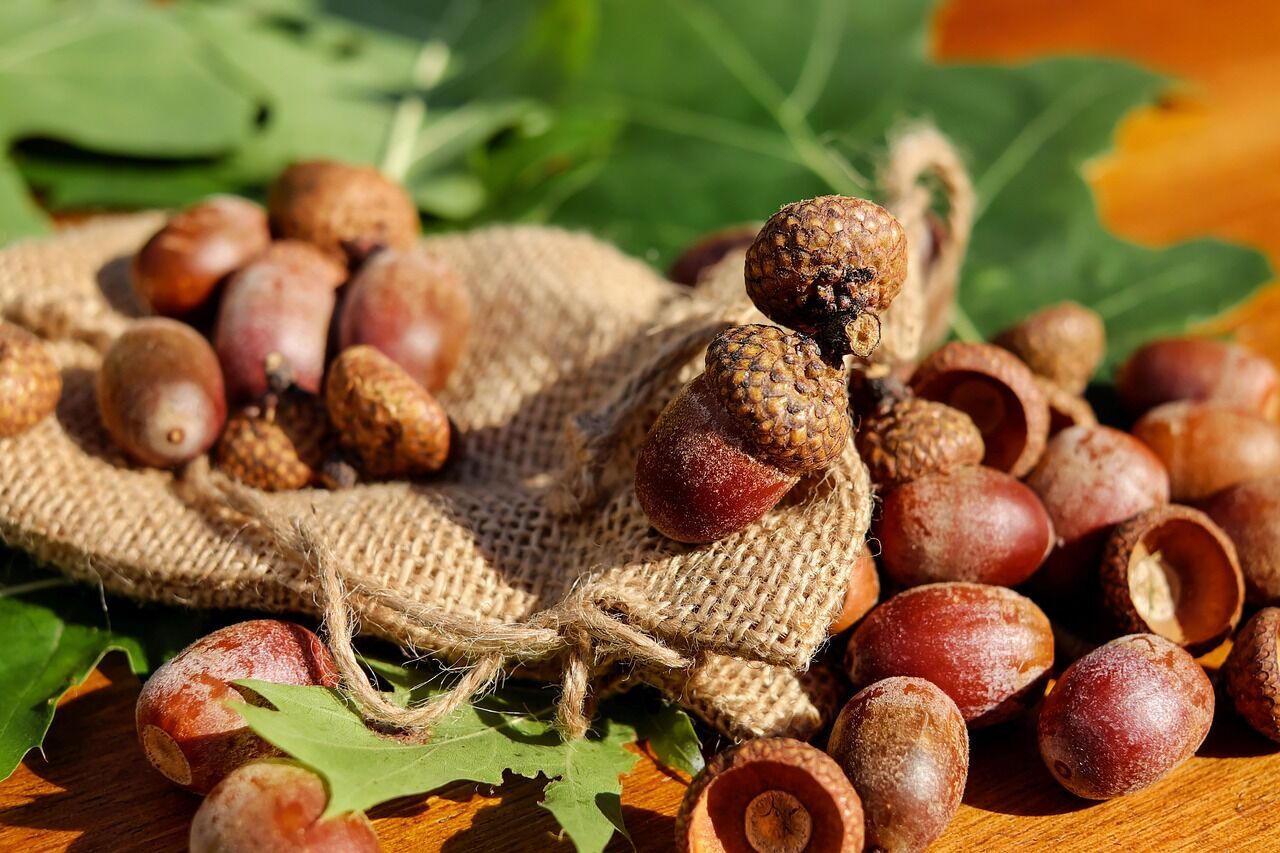
Acorns are not something most of us think about as food, however, Acorns were a staple of many Indian tribes and were used as a primary foodstuff from one coast to another. According to Jackie Clay (of Backwoods Home fame)
Acorns have been tested and found to be possibly the best food for effectively controlling blood sugar levels. They have a low sugar content, but leave a sweetish aftertaste, making them very good in stews, as well as in breads of all types.
Instead of Asking Can You Eat Acorns, We Show You How to Eat Acorns
Problems with Eating Acorns
The only two problems I have with eating acorns are I am too lazy to pick them up quick enough to prevent worms from ruining them, and the bitter taste the tannins give them. Luckily there are solutions to both problems, and this article and accompanying video will show How to Eat Acorns.
This year I decided to harvest acorns from the oak trees in my front yard. Being lazy, I spread out a large tarp and weighted it down with rocks. Every afternoon (or so) from September to early November I would take a quick look and scoop up any acorns I saw on the tarp. (I went the even lazier route and used by bullet roller since it was originally designed for picking up nuts). If the acorns were soft feeling, or looked like they were compromised I tossed them down the hill, the good ones went in my solar oven to collect in a place where they would not be subject to rot or worms.
How to Process Acorns to Remove Tannins
Once I got enough acorns to make the process worthwhile I took them inside to process them to remove the tannins. Tannic acid makes the acorns bitter, but different oak trees have differing amounts of tannins in the acorns. Depending on the oak tree and your taste buds, it may be possible to eat the acorns without any processing. However these oaks are rare, and normally in the west coast, generally eating an acorn without removing the tannins will make your mouth feel like cotton, can cause constipation, and with large amounts even kidney damage. Luckily to process your acorns all you really need is water.
Indians basically threw their acorns in baskets and left them in swiftly running streams until the tannins were leached out. For us modern folks, there are faster ways.
Dry and Peel the Acorns Before Trying to Eat Them
First thing to do is dry them out so that they don’t mold. You can lay them out on a sheet or tarp single layer deep and let the sun cook them. Personally, I would rather throw them in the dehydrator for a couple hours, or put them on a cookie sheet in the oven at its lowest temperature for an hour (about 175).
Next peel the acorn, its simple to crack the shell with a nutcracker or slip joint pliers, peel off the thin skin, and throw the good acorns in a bucket. If the acorn has a black hole its evidence of worm infestation – throw those out.
Grind the Acorns into Meal
Next get your food grinder and make a course meal. Put the meal in a pot and cover with boiling water. After an hour the water should be brown to black. You can throw this out, however, I have heard of using the tannin containing water to TAN animal hides. Since I don’t have both at the same time, I just dump it out. Taste the meal, if it taste sweet it’s done, if it’s like eating a green persimmon repeat the boiling water soak. Do this as many times as necessary.
Once you are happy with the meal, lay it out to dry. A good way to start this process is to dump the wet meal in a sheet or doubled sheet of cheesecloth, gather the ends like a jelly bag and press the water out. Next put in in the oven at its lowest setting or a dehydrator. Be careful with this process as if you let the meal sit around wet it will mold.
In an airtight jar the course ground chucks will last a while in the freezer, grind it to flour as you need it, because the acorn oil will go rancid about as fast a whole grains will. Either way course of fine, it will start go rancid in a couple weeks if stored at room temperature.
Eat Acorn Meal the Same Way as Wheat Flour
You can use acorn meal in many of the same ways as wheat flour. I have seen recipes online for acorn pasta, pancakes, and various breads. Today we are going to make a kind version of bannock bread that is a cross between a pancake and an unleavened bread loaf. Historically this is the closest to the common use of acorn meal I can find. Let’s see if an 11 year old will eat it, which in itself is a test of usefulness as a foodstuff.

